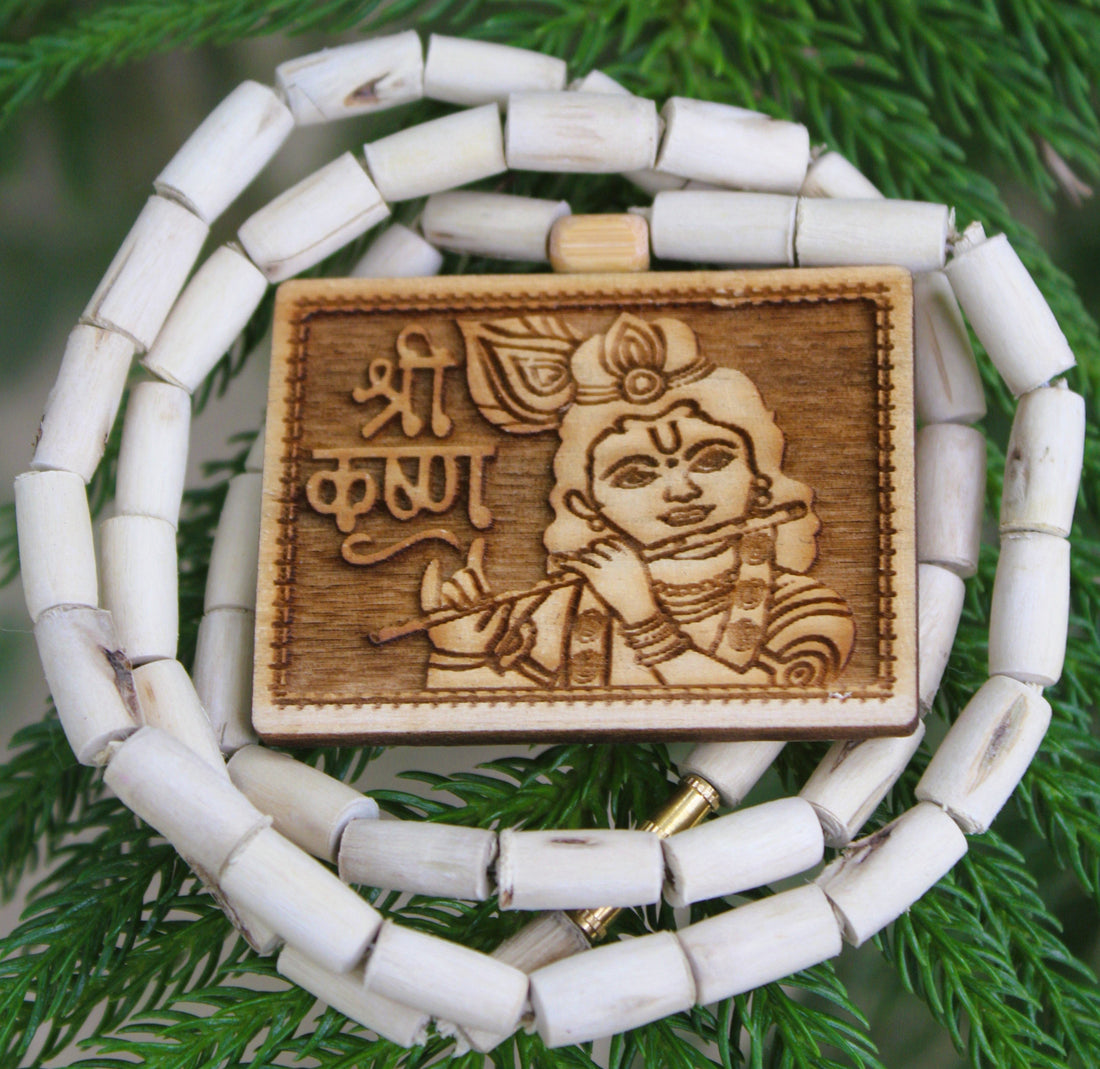
Cultural Importance of Tulsi Malas in Hinduism and Ayurveda
Share
The Tulsi plant, often referred to as the "Queen of Herbs," holds immense spiritual and medicinal significance in Hinduism and Ayurveda. Its beads, carved from its sacred wood, are used to create Tulsi malas, which are worn and utilized in meditation, rituals, and healing practices. These malas symbolize purity, devotion, and protection, connecting the wearer to a higher spiritual realm. Over centuries, the Tulsi mala has remained an integral part of Hindu culture and Ayurvedic healing.
The Historical Origins of Tulsi Mala
The origin of Tulsi malas dates back thousands of years, rooted in Hindu scriptures and traditions. Tulsi, or Holy Basil, is revered as a sacred plant, often associated with Lord Vishnu and Goddess Lakshmi. The practice of using Tulsi beads in the form of malas is believed to have originated in ancient India as a tool for spiritual growth and protection.
The 27 beads japa mala, a popular choice among devotees, is specifically designed for mantra chanting and meditation. The significance of 27 beads lies in its mathematical and spiritual connection to cosmic energy cycles, which align with the rhythmic chanting of holy names such as "Radhe Radhe.
Tulsi Mala in Hindu Devotion
In Hinduism, the Tulsi mala is more than a prayer bead; it is a symbol of surrender to the divine. Wearing a small Tulsi mala is said to purify the wearer’s aura and keep negativity at bay. Devotees often use Tulsi malas to chant the names of Lord Krishna and Lord Vishnu, enhancing their connection to the divine.
The association of Tulsi malas with Lord Krishna is particularly strong. Krishna devotees believe that chanting His name with a Tulsi mala, such as the Tulsi Rudraksha mala, amplifies their spiritual practice and brings them closer to His blessings.
Additionally, personalized pendants like the Radhe Radhe name locket are often combined with Tulsi malas to further enhance the devotional connection.
Cultural Importance in Ayurveda
In Ayurveda, Tulsi is celebrated for its medicinal properties, including its role as an adaptogen that helps the body cope with stress. The use of Tulsi malas in Ayurvedic practices aligns with these principles, as the natural vibrations of Tulsi wood are believed to have a calming effect on the mind and body.
Tulsi mala beads are said to retain the medicinal essence of the plant, making them effective in balancing the doshas—Vata, Pitta, and Kapha. Wearing a small Tulsi mala is thought to reduce anxiety, improve focus, and promote overall well-being.
Rituals and Spiritual Practices
The Tulsi mala is an essential tool for Japa meditation, where each bead is touched while chanting a mantra. This practice helps in concentrating the mind and aligning it with spiritual intentions. The 27 beads japa mala is particularly convenient for shorter meditation sessions, allowing practitioners to complete their rounds efficiently while maintaining focus.
For many, the Tulsi mala is not just an accessory but a daily companion in spiritual life. The Tulsi Rudraksha mala, which combines Tulsi beads with Rudraksha seeds, is popular for its dual benefits of Tulsi’s spiritual purity and Rudraksha’s grounding energy.
Symbolism and Protection
Tulsi malas are often worn as protective talismans. According to Hindu beliefs, the mala acts as a shield against negative energies and evil forces. The sacred nature of Tulsi beads ensures that the wearer remains connected to divine vibrations throughout the day.
The combination of a Radhe Radhe name locket with a Tulsi mala is particularly significant, as it merges personalized devotion with the spiritual essence of Tulsi, creating a unique symbol of faith and protection.
Tulsi Malas in Modern Times
In the modern era, the cultural and spiritual importance of Tulsi malas remains strong. Many people wear small Tulsi malas or use 27 beads japa malas for mindfulness and stress relief, blending ancient traditions with contemporary wellness practices.
The versatility of Tulsi malas extends beyond religious boundaries. They are increasingly recognized for their role in fostering mental clarity and emotional stability, making them popular among people from diverse backgrounds.
How to Choose the Right Tulsi Mala
When selecting a Tulsi mala, it is essential to consider its purpose:
- For chanting and meditation, a 27 beads japa mala is ideal for focused sessions.
- For all-day wear, a small Tulsi mala is lightweight and comfortable.
- For a combination of spiritual and healing properties, the Tulsi Rudraksha mala is a perfect choice.
- Devotees seeking a personal touch can opt for a Radhe Radhe name locket paired with their mala.
Conclusion
The Tulsi mala is a timeless symbol of devotion, healing, and protection, deeply woven into the cultural fabric of Hinduism and Ayurveda. Its historical significance, combined with its spiritual and medicinal benefits, makes it an invaluable tool for enhancing one’s spiritual journey. Whether you use it for meditation, wear it for protection, or cherish it as a symbol of faith, the Tulsi mala continues to inspire and uplift lives.
